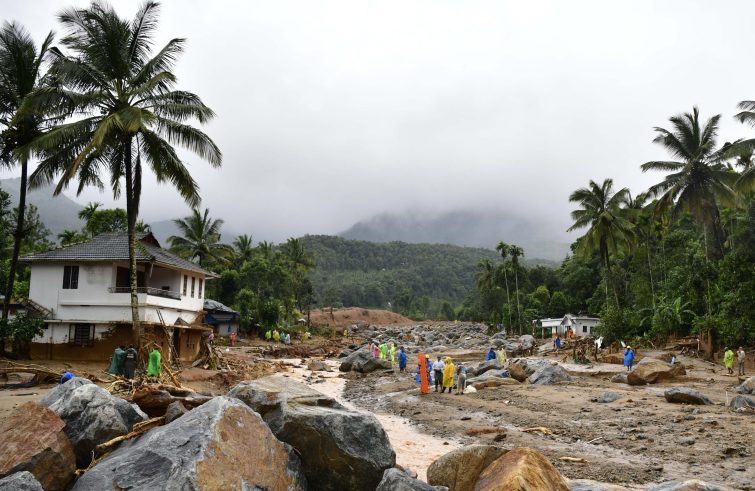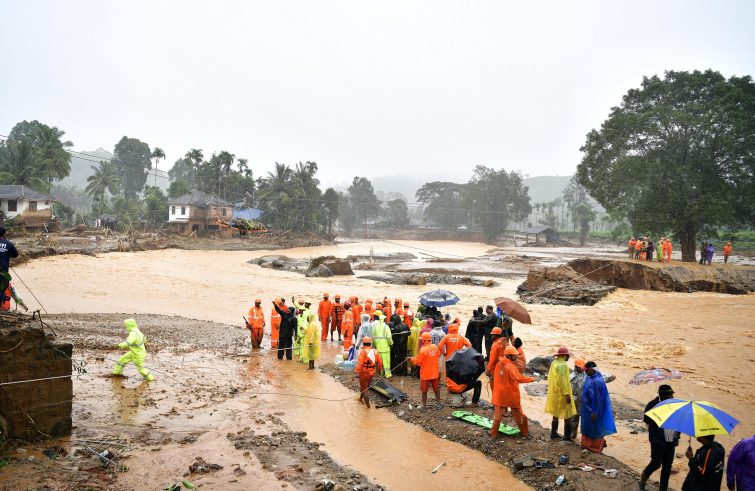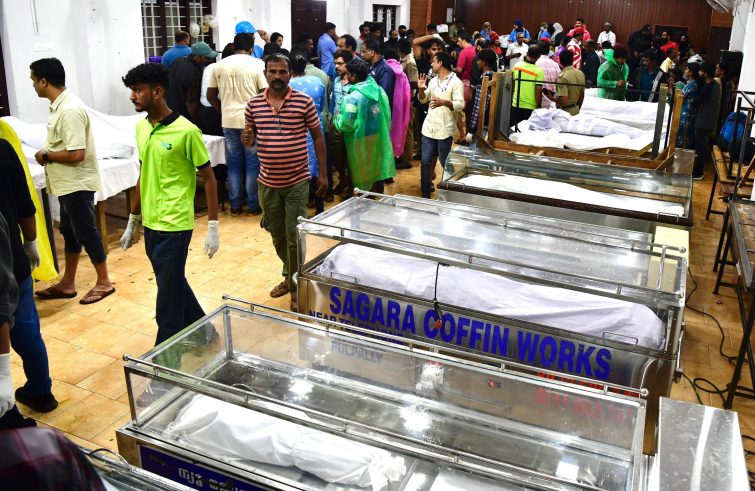
More than 120 people are confirmed dead, hundreds injured or missing and thousands displaced after torrential rains – not uncommon in this area of southwest India – triggered landslides that swept away entire villages. “This is what the Kerala region looks like today. This land, with so many stories of survival, is on the verge of another catastrophe,” says Father Jobin Tholani (in the photo), a member of the Congregation of the Carmelites of Mary Immaculate and a native of Mundakkai. The religious, who studied in Italy, has his people, his land, in his heart.
 Reports shrouded in sadness. “The lush and ever-beautiful tea plantations of Meppady village in the north-eastern part of Kerala were rocked by massive, multiple landslides” on Tuesday, 30 July. The words describe the dramatic events amidst intense emotional backdrop. Heavy rains that continued for days on end triggered multiple landslides and floods that swept through several villages. The situation in Wayanad district in the state of Kerala is tragic. The death toll is rising by the hour. The landslides, which affected several towns, hit residential areas in the middle of the night, complicating all rescue efforts.
Reports shrouded in sadness. “The lush and ever-beautiful tea plantations of Meppady village in the north-eastern part of Kerala were rocked by massive, multiple landslides” on Tuesday, 30 July. The words describe the dramatic events amidst intense emotional backdrop. Heavy rains that continued for days on end triggered multiple landslides and floods that swept through several villages. The situation in Wayanad district in the state of Kerala is tragic. The death toll is rising by the hour. The landslides, which affected several towns, hit residential areas in the middle of the night, complicating all rescue efforts.
“Relief and rescue operations,” says Father Tholani, “are being hampered by the bad weather, by the presence of large boulders that have fallen on the roads, and by the collapse of one of the main bridges in the district, which has left entire areas isolated.”
Houses swept away. A dramatic, harrowing account. “Authorities mobilised helicopters to help with rescue efforts and the Indian army was roped in to build a temporary bridge.” A large number of houses and roads were inundated with muddy water. Tea plantations – a source of work and livelihood for many – were also submerged. As the rain alert continued, Indian Prime Minister Narendra Modi offered his condolences to the victims and assured local authorities of all possible help: “My thoughts are with all those who have lost their dear ones and my prayers are with the injured,” Modi said.
The death toll is not final. Continuing his account, the Carmelite priest said: “Government officials had issued a red alert for heavy rains, but an intense cloudburst triggered a massive landslide.”
The first landslide was triggered at around 1am and continued in the hours that followed, “sweeping away hundreds of dwellings and resorts in a densely populated area.”
The number of casualties – sadly still undetermined – “exceeds 120. And this tragic number is destined to rise. Residents had no opportunity to prepare for the disaster as it hit in the middle of the night, catching everyone off guard and resulting in the high death toll. Hundreds of people were trapped in the rubble and many more were swept away by the floods. Huge boulders crashed down into the village and the mudslide caused bridges and roads to collapse, making rescue operations extremely difficult.”
- (Foto ANSA/SIR)
- (Foto ANSA/SIR)
Human limitations. The priest described “the sight of a man covered in mud clinging to a huge boulder to survive the floods. This image has become a symbol of the limitations of humanity in the face of natural disasters. Local residents, helpless to do anything but watch the man’s struggle, called on the authorities to rescue him as a matter of urgency.” Rescue operations and the search for bodies continue under the supervision of the Indian Army.













